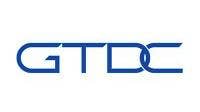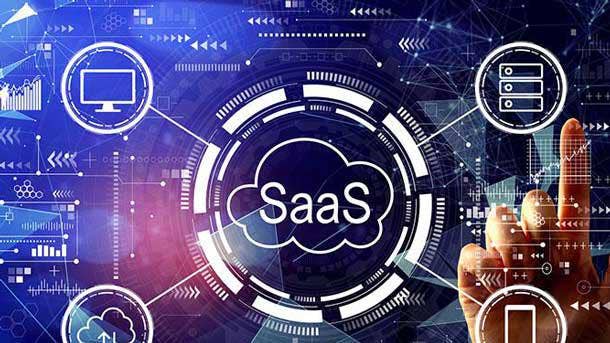GTDC’s Frank Vitagliano: IT Distribution Consolidates, But Still Key To Channel Success
‘I think the vendors will benefit from stronger distributors and ones that make significant investments because the vendors will take advantage of those. I think the solution providers and the MSPs will benefit. And then finally the end-user customer will benefit. So I view it as very positive,’ says GTDC CEO Frank Vitagliano.

It’s All About Services For The Channel
IT distribution is going through an important shift as mergers and acquisitions make the leaders stronger. However, argues Frank Vitagliano, CEO of the Global Technology Distribution Council, or GTDC, that strength is very much a positive for solution providers and managed service providers looking to bring new services to clients looking to digitally transform their businesses.
Vitagliano, in a wide-ranging conversation with CRN, said the kind of technology, particularly services, end customers are demanding of their channel partner is increasingly complex, and those partners need help in providing them.
“What we’re dealing with right now is really unusual with the proliferation of cloud-based services, with a major focus on security, with major transition coming with everything-as-a-service,” he said. “There’s a lot happening that requires support and the incremental services that the distributors have traditionally always provided. And if anything, it’s getting more complicated, not less.”
Vitagliano also said that nothing exemplifies the value of distribution better than the COVID-19 coronavirus pandemic when distributors kept their doors open and the technology and financing flowing to partners despite the all-but-overnight shift to work from home.
Vitagliano, in his role as head of GTDC, has a unique insight into what is happening in IT distribution. For more of that insight, click through the slideshow.

First of all, what is the Global Technology Distribution Council, or GTDC?
GTDC was formed in 1998. So it’s been around a long time. And today we have 21 distributors from North America and Europe included. Obviously the big global players are all included, and there’s a number of regional and or country-based players in Europe. And they represent more than $150 billion in annual sales. So clearly the vast majority of the distribution channel is included. And our role primarily is to educate the marketplace on the services and the value that distributors provide. And so we work very closely with a lot of the members of what I call the IT supply chain: the vendor community, certainly to some degree the solution providers and the MSPs. And we provide education, training, and also really importantly, a forum for input and discussion regarding what’s happening in the marketplace, and how distributors will continue to provide value by leveraging the services that they’ve had in place for a long time, particularly in the area of digital transformation.
What does the overall landscape of the distribution industry look like?
Lately we’ve seen a significant amount of activity. And while there’s always been activity in the marketplace, what we’ve seen recently is very significant. And it started with Ingram Micro being purchased by HNA five years ago now. And then Tech Data bought the Avnet Technology business. Then Tech Data was brought private by Apollo. And now Ingram is being purchased by Platinum. And if that wasn’t enough, we recently had the merger of Synnex and Tech Data, which is a merger, but Synnex is a public company that is actually purchasing privately-owned Tech Data.
These are really significant developments and go beyond basic consolidation. The buyers recognize the role and the value that distributors provide and more importantly recognize the opportunity for significant, longer-term value creation. And that value creation in my opinion, and I think in their opinion, isn’t just, ’Oh, I’m going to consolidate and cut costs.’ It’s more along the lines of, ’We’re going to leverage this tremendous foundation that’s been built by these distributors, huge infrastructures with decades of investment and experience and expertise, and on top of that, we’re going to make significant investments in areas like digital transformation, cloud, everything-as-a-service, et cetera.
And so as a result, I think this is a really interesting time, and honestly, I think it’s great for the industry because it will clearly enable and facilitate gross dollar investments. In other words, the merger now between Tech Data and Synnex will be very positive for the industry because they’ll consolidate their dollars in terms of making big investments in key areas. And I frankly think it’s going to also be very positive for [their competitors who will] be focused on ensuring that they can make these significant investments in key areas.

Is this consolidation good for the IT industry?
The neat thing about the distributors that are part of the GTDC is they all provide the basic functionality and the basic services that distribution provides. But each of them are different in terms of areas of expertise. There are some niche distributors that are excellent at what they do, and they’ve had relationships in place for years with their customers. And that isn’t going to change. So ultimately I think everybody will benefit from this. I think the vendors will benefit from stronger distributors and ones that make significant investments because the vendors will take advantage of those. I think the solution providers and the MSPs will benefit. And then finally the end-user customer will benefit. So I view it as very positive, and I think it’s indicative of what people in the smart money in the marketplace views as good investments.
How do solution providers, the VARs and the MSPs, benefit from this kind of consolidation when they will be dealing with fewer distributors going forward?
I think the service level will increase because if you look at what’s happening right now in the marketplace, and it’s always happened, we’ve always seen significant technology advancements, but this is unusual. What we’re dealing with right now is really unusual with the proliferation of cloud-based services, with a major focus on security, with major transition coming with everything-as-a-service. There’s a lot happening that requires support and the incremental services that the distributors have traditionally always provided. And if anything, it’s getting more complicated, not less. ...
Everything-as-a-service is a great example. Every vendor is transitioning to everything-as-a-service because it makes sense. And because it looks like it’s going to hit very squarely what customers are looking for. Customers are asking for it and they want it because it makes. Well guess what? Solution providers are right in the middle of that. And they’re trying to figure out how to transition their business to be able to support that. And traditionally, when solution providers have tried to figure out how to transition their business, or when they’ve needed support in certain areas, they clearly go to the distributors. Those relationships have been in place forever. So they’re going to benefit from the increased investments. They’re going to benefit from the added services and service levels that result from this. And when the distributors are all focused on improving their service level, that is nothing but good for their customers.

But at the same time, there are other companies providing other types of distribution, companies like Pax8or platform providers like Dattoand Kaseya.
There’s always been niche players in the marketplace that provide ancillary services. And I frankly think there always will be. In other words, I think those will continue. However, when you look at the function that the distributors provide across the board and the investments that have been made and the capabilities that they have, that’s not going away. The barriers to entry to be a full-fledged, full-service distributor are pretty significant. And I’m talking about all the front-end things that the distributors do as it relates to helping find customers, helping the vendor community attract solution providers, helping them target various industries. And then there’s all the support running from the basic logistics support, which has been in place for a long time, to all the financial support that’s been in place for a long time and is a really important part of the industry, to some of the other items that now are important in terms of deploying, for example, infrastructure-as-a-service. So they’re building cloud marketplaces, they’re creating billing infrastructures, they’re establishing API integrations, they’re doing currency management, local and international compliance. There’s a myriad of things that are part of the overall service level that can’t get overlooked. Now, are there some smaller players, more niche players, that do some of that? Absolutely. And I think there will always be those folks. But when you’re looking at the entire picture, the full-service distributors that are in place today, have been providing a pretty significant level of service. And I think that will continue.

What are distributors doing in terms of infrastructure-as-a-service?
Infrastructure-as-a-service is the next big transition that we’re seeing. And it will continue to accelerate. And it makes sense. It will alter the IT landscape dramatically I think two things have helped push it to the forefront. One is the maturity of cloud-based services and the fact that that is no longer a dream. It’s now reality. And secondly, to some extent, the pandemic, which has forced companies to rethink how they acquire, deploy, and manage technology assets and capabilities.
And as a result, everything-as-a-service is big and it’s growing fast. And all of the major vendors and many of the smaller vendors are all migrating to it. And it’s really a great example of an area where the distributors are making major investments. They’re working very closely with the vendors. The cloud marketplaces are obviously part of all of this, but the billing infrastructures that are required are quite complex, the API integrations are really significant. And it’s a very complex endeavor because each vendor and many of the distributors all have unique aspects as to the offerings. And so there isn’t a global standard today. We may get to one at some point in time. I don’t know.
What it requires right now is exactly what the distributors are fairly good at, which is digging in with each of their vendor partners and figuring out how to deploy this transition, this different way of doing business. And they’re making progress, but it isn’t just in the technology. It’s also in processes and it’s in people because you have to think differently now when you’re deploying this from what we did in the past. And it’s not unlike what the solution providers experienced when a portion of their business transitioned from just selling hardware to an end user to selling services and then selling managed services on a recurring revenue model. ...
Solution providers are all going to benefit from that because every one of them is being asked again by the vendors that they work with and the customers that they sell to deploy technology this way. And I think they’re going to need the help of the distributors because it is very complex.

With the adoption of cloud-based services and everything-as-a-service, isn't there a temptation on the part of some vendors to look at taking those services directly to the business users and bypass any type of distribution altogether?
Yeah, sure. Absolutely. I think there has always been, and I think there always will be, some portion of IT deployment technology that will lend itself to go direct. However, I would argue that this is less likely to do that than other aspects. And the reason is the complexity. We’re not talking about just a simple scenario of moving a box or set of services. What’s required here, and what the customer wants, is a suite of services provided in a comprehensive way and managed in a comprehensive way. In other words, they don’t want one vendor providing them with one set of services, another providing another set. Customers typically want that all incorporated. And that’s frankly what the solution providers have been doing for years, and will continue to do. So the notion that that this will facilitate a move to direct, I don’t think makes sense because it still doesn’t change the fundamental premise and the fundamental requirement of what the solution providers have been doing for years.
Now, there are some solution providers that have a significant amount of scale that can perform some of the complex work themselves in terms of integrating it, managing it, securing it. There are some solution providers that will do that. Many of them, I would actually argue most of them, will revert back to what they’ve always reverted to, which is getting the distributors to help them do that. And so the role of distribution over time I think will evolve into sort of an orchestration level where they orchestrate and manage a lot of this. And there’s a ton of complexity associated with it. So while I think direct to customer will always be a portion of the market, I don’t think this will force it to be more than what we’re seeing today.

How about the move to turn everything into either software or a service? How is that going to impact the distribution going forward?
I think that there’s still going to be a requirement for somebody to help manage and deliver that. That’s the point that I make about the changing role of distribution over time. It will clearly include significantly more software and services support than traditional hardware support. I don’t think hardware support will ever go away, but I think clearly the software and services piece is growing dramatically faster. But if you listen to what each of the distributors are saying, they’re all engaged in that on a day-to-day basis, and they’re establishing services in that space, and everybody’s all around trying to label, it if you will. Some people call it orchestration, and the fact that there’ll be more aggressive in orchestrating the linkages between the vendor, the solution provider, and the customer than they have been in the past. And they’re going to provide a different level of service. So I do think that’s a change that will happen. But we’re in the middle of it right now and we’ll go into it, but it’ll happen gradually and it’ll happen as part of a transition, I think. And they’ll get there. And just like over the years we’ve seen the role of solution providers change, with the advent of managed services and subscription services and all of that, I think the role that distributor over time will continue to evolve. But I would also tell you that the infrastructure and the expertise and the experience that these folks have built up over the last 30 years is going to serve them well as they continue to transform their business.

How has distribution done over the last year in the face of the COVID-19 coronavirus pandemicand other changes?
There is a really important point that I think people have to really understand and give the distributors credit here. We all know how significant the last year has been in terms of changing everybody’s lives and changing frankly, everybody’s way of doing business. It was incredible how quickly distributors mobilized their people and processes to take a leadership role in what’s gone on in the last year. So they started by moving thousands of inside sales and support people to work from home like every other business had to do. They had traditionally had huge rooms supporting their customers, and essentially overnight they went from that to work from home. So that was a big transition.
The second really significant piece was, there was a number of areas of their businesses that they couldn’t do that, that didn’t lend themselves to work from home. Obviously I’m talking about warehousing and logistics. And that had to get handled very quickly. The first issue was obviously ensuring the safety of their people, and they quickly were able to figure that out. And as a result, the IT supply chain continued to move pretty seamlessly. Initially some of it had to do with, there was inventory in the channel, as distribution has always had, and always will. There was some degree of inventory in the channel, whether it was 30 days, whether it was 40 days, but there was some degree that was able to fill the gap initially.
What happened then?
The distributors started to leverage their longstanding relationships with the vendor community to quickly ensure that we could get access to inventory globally. And whether it was a smaller distributor like Esprinet in Italy or whether it was a big global distributor, like Ingram, Tech Data, Arrow, or Synnex, those folks quickly began working with the vendors. And inventory flowed. And not only did inventory flow, but then distribution started doing what they always do. Because you’d expect them to manage the inventory piece, assuming that we could get around any shortages that were caused by either manufacturing or product shortages or component shortages. But then they started putting unique services in. They did training work from home process and procedures for their customers. They put bundles together that enabled people to quickly deploy work from home. And probably most importantly, they were a consistent source of stability from a financing standpoint, with flexible creative financing programs that really worked and honestly provided a sense of comfort and a sense of stability to a lot of small solution providers and MSPs that honestly potentially had cashflow problems in front of them. And the distributors stepped up and really helped them.